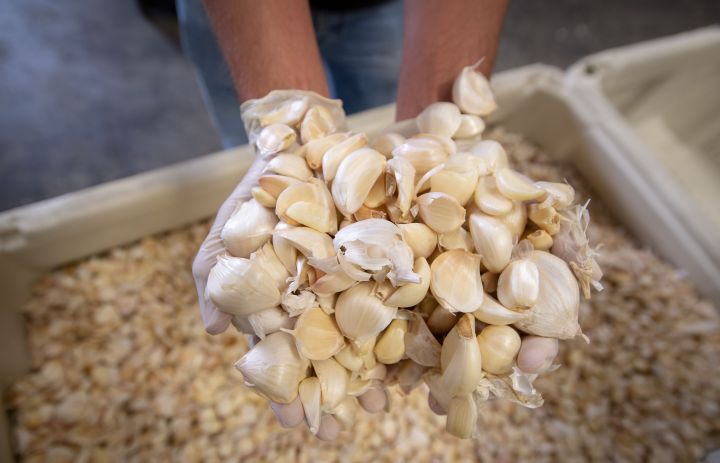
President Trump’s tariffs are good for U.S. garlic growers
President Trump’s tariffs are good for U.S. garlic growers

Though many farmers have taken a hit from the trade war with China, garlic growers are benefiting from it. Ken Christopher is the executive vice president of Christopher Ranch in Gilroy, California. His family’s company is the leading garlic producer in the country. He talked with “Marketplace” host Kai Ryssdal about why tariffs on Chinese imports are good for garlic growers. The following is an edited transcript of their conversation.
Kai Ryssdal: Do me a favor and give me — just because most people probably aren’t familiar with it — the general state of play in the garlic industry in this country, would you?
Ken Christopher: So about half of all the garlic consumed in the U.S. is sourced from abroad, and half is made here domestically. My family, we grow about a third of the total garlic consumed in America, but the other half, that’s largely coming in from China, and most of that is illegally dumped Chinese garlic.

Ryssdal: Which explains the headline I saw in an article about you the other day, which was that you hoped tariffs stay on “forever.”
Christopher: Oh, this is a really exciting time for the garlic capital of the world, Gilroy, California.
Ryssdal: Well, tell me more.
Christopher: So since the 1990s, Chinese exporters have illegally dumped millions of pounds of garlic on our shores. Before they started dumping, there used to be 12 commercial garlic growers in the country. Now there’s only three. So while we understand that these tariffs may not work for all farmers or even most farmers, for the garlic industry, they’re critically important.
Ryssdal: Give me the nuts and bolts. If I bought a box of California garlic, how much would it cost me? And how much would a box of Chinese garlic cost me?

Christopher: So, California garlic trades for about $60 a box for a 30-pound box. Before the tariffs were implemented — the first round was 10% back in September — you saw Chinese garlic at about $15 a box, maybe a quarter of what we could sell for. The first 10% went into effect in September. We saw that price rise to the mid-20s, and then as we approached the 25% tariff, we saw the price increase to high-30s and low-40 dollar range. So little by little, these tariffs are really having an incredible effect.
Ryssdal: So if you had your druthers, I mean, I was kind of I was making light of it before, but if you had your druthers, these tariffs would stay on for a good, long while.
Christopher: We would hope so because it’s been a 25-year fight between my family and a series of Chinese exporters.
Ryssdal: Who have been, in your estimation, and actually have been found by the government to be dumping Chinese garlic into this country, right?
Christopher: Oh, yeah, customs, homeland security, the U.S. Department of Commerce, the U.S. Trade Representative, they’ve all identified them.

Ryssdal: On the theory that farmers on whatever crop have at least a little bit in common, what do you say to the soybean farmers and those, you know, the hog farmers who are getting whacked by these tariffs?
Christopher: Yeah, I mean, my family’s heart goes out to them. But there’s a much larger narrative to the tariff conversation because it’s not only garlic that’s benefiting from the tariff. Honey farmers, crawfish farmers, they’re among the few that are greatly benefiting.
Ryssdal: With all the twists and turns that American trade policy has taken in the last two-something years, 18 months maybe, what happens if you wake up tomorrow morning and there’s a tweet from the president that says “President Xi and I have made a deal. Everything’s fine. Tariffs are going away.”
Christopher: We understand that tariffs are probably not a long-term solution, and in the broader macroeconomic sense of the country, they’re not great for us. But it’s our hope that in the end, once there’s a resolution or an agreement, that their will actually be enforcement of existing law on our ports.
There’s a lot happening in the world. Through it all, Marketplace is here for you.
You rely on Marketplace to break down the world’s events and tell you how it affects you in a fact-based, approachable way. We rely on your financial support to keep making that possible.
Your donation today powers the independent journalism that you rely on. For just $5/month, you can help sustain Marketplace so we can keep reporting on the things that matter to you.












